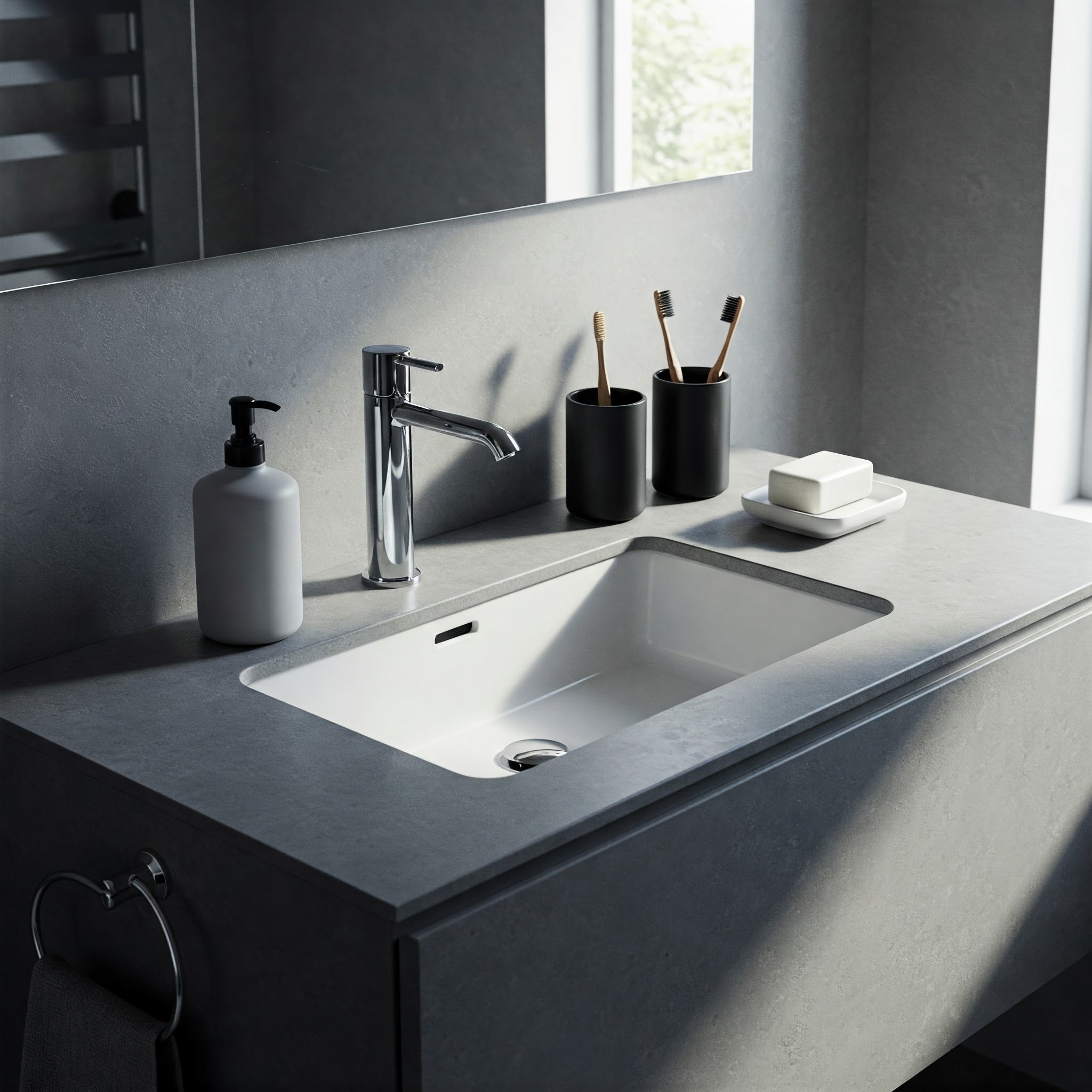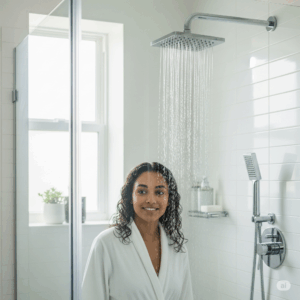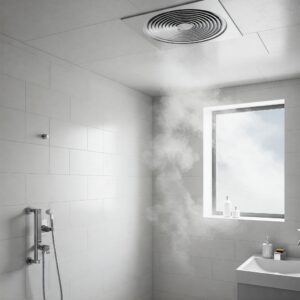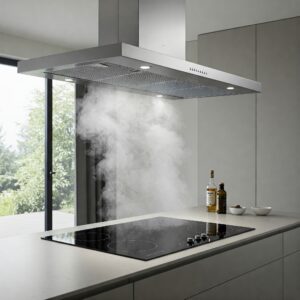When designing or remodeling a bathroom, countertops (often called vanity tops) play a significant role in the room’s overall aesthetic. They provide a surface for sinks, toiletries, and contribute heavily to the style. However, unlike kitchen counters, bathroom countertops face a unique set of daily challenges: constant exposure to water, steam, soap scum, toothpaste, makeup, lotions, and various cleaning products. Therefore, while style is important, focusing on functionality – how well the material performs and holds up in this specific environment – is crucial for ensuring your vanity top remains beautiful and practical for years to come. This guide delves into the key functional aspects to consider when selecting the best countertop for your bathroom.
Core Functions of Bathroom Countertops
While perhaps less intensively used for prep than kitchen counters, bathroom countertops serve vital functions:
- Supporting the Sink: Housing undermount, drop-in, vessel, or integrated sinks.
- Surface Space: Providing essential space for toiletries, grooming tools, soap dispensers, and decorative items.
- Grooming Area: Acting as a workspace for daily routines like brushing teeth, applying makeup, or skincare.
Key Aspects of Bathroom Countertop Functionality
Evaluate potential materials based on these critical performance characteristics tailored to the bathroom environment:
1. Water Resistance & Durability
- Moisture & Humidity Resistance: This is paramount. The countertop must withstand constant exposure to water splashes, steam, and high humidity without warping, swelling, staining, or degrading over time. Non-porous materials excel here.
- Durability & Impact Resistance: Consider resistance to chipping or cracking if items like perfume bottles, curling irons, or glass containers are accidentally dropped. Edge profiles can also influence chip resistance.
2. Maintenance & Ease of Cleaning
How easy is it to keep the surface clean, hygienic, and looking its best?
- Stain Resistance: Bathrooms present unique stain challenges – toothpaste residue, colorful makeup powders, liquid foundations, hair dyes, nail polish remover, lotions, and soaps. How easily can these be wiped away without leaving a permanent mark? Non-porous surfaces offer the best resistance.
- Sealing Requirements: Porous materials (like unsealed natural stone) require periodic sealing to prevent water and stains from penetrating the surface. Non-porous materials eliminate this maintenance step.
- Cleaning Routine: Can the surface be easily cleaned with standard, non-abrasive bathroom cleaners, or does it require specialized products? Some materials (like marble) can be easily etched or damaged by common acidic bathroom cleaners. Tile grout requires dedicated cleaning.
- Mold & Mildew Resistance: Non-porous surfaces with minimal seams are less likely to harbor mold or mildew growth compared to porous materials or tiled surfaces with extensive grout lines.
3. Hygiene
In a space dedicated to personal hygiene, the countertop material matters. Non-porous surfaces (like quartz, solid surface, properly glazed tile) are inherently more hygienic as they offer fewer places for bacteria and germs to penetrate and grow.
4. Integration with Sinks
The countertop must functionally accommodate your chosen sink style:
- Undermount Sinks: These create a seamless edge between the counter and sink basin, making it easy to wipe water and debris directly into the sink. They require a solid, water-resistant countertop material (not typically suitable for laminate).
- Integrated Sinks: The sink basin is molded as part of the countertop itself, usually from solid surface or cultured marble. This offers the ultimate seamless, easy-to-clean solution with no rims or joints.
- Drop-in Sinks: The sink has a visible rim that rests on top of the counter. Easier to install but creates a lip where grime can collect.
- Vessel Sinks: Sit entirely on top of the counter. Creates a design statement but requires careful cleaning around the base where it meets the countertop.
Matching Functionality to Bathroom Use
The best material often depends on which bathroom it’s for:
- High-Traffic Family/Kids’ Bathroom: Prioritize maximum durability, stain resistance, and ease of cleaning. Low maintenance is key. Good choices: Quartz, Solid Surface, well-sealed Granite, potentially Cultured Marble.
- Master Bathroom / Spa Retreat: You might prioritize aesthetics more, potentially choosing luxurious materials like Marble if you accept the higher maintenance. However, durable, low-maintenance options like Quartz or Solid Surface still offer a high-end look without the upkeep.
- Powder Room / Guest Bathroom: Sees less daily wear and tear and less exposure to harsh toiletries. This allows for more decorative or slightly less durable/stain-resistant materials if desired (e.g., certain Wood finishes, higher-end Laminate, potentially unsealed Concrete).
Material Functionality Overview for Bathrooms (Brief Summary)
- Quartz: Excellent Choice. Highly durable, non-porous (no sealing needed), resistant to stains, scratches, water, and bacteria. Wide range of styles, including marble looks.
- Granite: Very Good Choice. Very durable, scratch-resistant. Highly water-resistant if sealed properly. Requires periodic resealing (typically annually) to prevent staining from water or toiletries.
- Marble: High Maintenance. Beautiful and luxurious. Porous; stains and etches (dulls) very easily from acidic products (cleaners, some cosmetics, lemon). Requires frequent sealing and extremely careful cleaning. Best suited for low-traffic areas or owners committed to meticulous care.
- Solid Surface (e.g., Corian): Very Good Choice. Non-porous, seamless look possible (including integrated sinks), hygienic, scratches can be buffed out. Not as heat-resistant as stone (less critical in bathrooms) and can still scratch.
- Cultured Marble/Onyx/Granite: Good Value Choice. Resin-based product with a protective gel coat, often with integrated sinks. Surface is non-porous and easy to clean initially. Gel coat can scratch, dull, or stain over time, especially if damaged. Can be susceptible to thermal shock (sudden temperature changes).
- Laminate: Budget-Friendly Choice. Surface is water-resistant, but seams and substrate (particleboard) are highly vulnerable to water damage if moisture penetrates. Scratches easily, cannot be repaired, not suitable for undermount sinks. Best for powder rooms or very low-moisture situations.
- Tile: Durable Tiles, High-Maintenance Grout. Tiles themselves are durable and water-resistant. Grout lines are porous, require diligent cleaning to prevent mold/mildew, and need periodic sealing. Creates an uneven surface. Less popular for vanity tops today.
- Concrete: Stylish but Needs Care. Modern aesthetic, customizable. Porous and requires diligent sealing to resist stains and water. Can develop hairline cracks. Heavy.
Conclusion
When selecting a bathroom countertop, looking beyond the surface appearance to consider its functional performance is essential for long-term satisfaction. Prioritizing water resistance, stain resistance (against common bathroom products), durability against impacts, and ease of cleaning will ensure your vanity top withstands the unique demands of the bathroom environment. By carefully evaluating material properties in light of how the bathroom will be used, you can choose a countertop that beautifully blends style with the everyday practicality needed for this hardworking space.







Leave a Comment